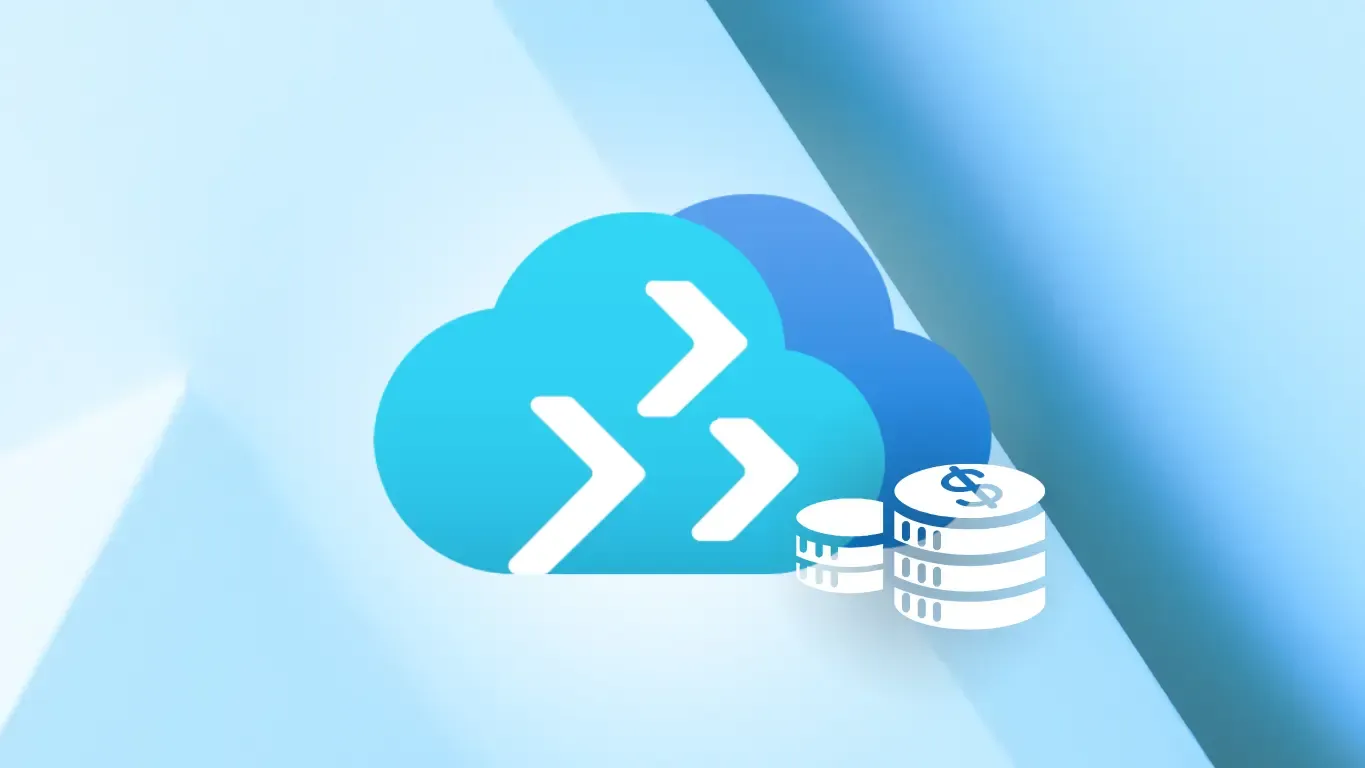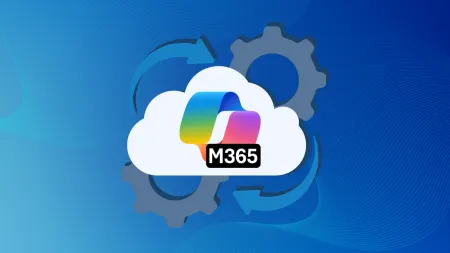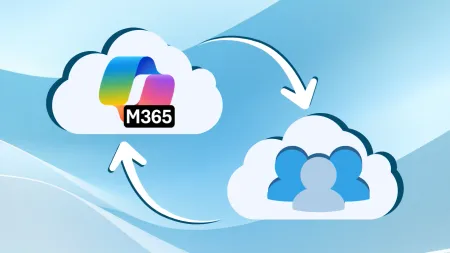Azure Migration Cost Guide: Estimating, Optimizing & Avoiding Hidden Expenses
Learn how to estimate, optimize, and avoid hidden expenses in Azure migration. Compare on-prem vs. cloud costs, use Azure Cost Management tools, and implement cost-saving strategies.

Azure Migration Cost Guide: Estimating, Optimizing, and Avoiding Hidden Expenses
Migrating your IT infrastructure to Microsoft Azure can be hugely beneficial to your company. Transitioning to the cloud helps modernize your business with additional layers of cybersecurity and flexibility to adapt to evolving circumstances. However, companies have to be mindful of how they use their money when attempting to execute any migration strategy. Cost estimation is crucial to a successful Azure migration. Overlooking the price of moving your applications to the cloud can lead to budget overruns and reduce your ability to fully utilize the in-built advantages of Azure architecture. To ensure that your team has cost certainty throughout the migration process, follow this guide to optimize your use of resources.
Estimating Costs for Azure Migration Projects
1. Key Cost Factors in Azure Migration
- Compute Costs — The size and type of Azure virtual machines (VMs) you intend to use will play a role in the cost of any migration project. Azure VMs are available in different sizes and categories (general purpose, compute optimized, memory optimized, storage optimized, graphical processing units, and high-performance computing) suited for particular use cases. The region you operate from will also impact the price point.
- Storage Costs — The amount you can expect to spend on Azure storage will differ depending on your usage needs. Azure offers four tiers of online storage – hot, cool, cold, and archive.
- Networking Costs — Data transfers between Azure regions and outbound traffic will significantly alter the price of networking expenses.
- Software Licensing — Certain workloads require third-party software and operating system licenses to function properly, adding to the cost of Azure migration.
2. Comparing On-Premises vs. Azure Hosting Costs
When deciding whether to move your workloads to Azure or continue using on-premises hardware, it’s important to know the financial implications of either choice. On-premises systems require significantly more upfront investment to set up networks, data centers, and other pieces of equipment to your specifications. You will then have to consider the regular outlays to power and maintain your equipment, implement internal security measures, and pay the salaries of IT staff tasked with managing the servers.
When you use the Azure cloud, you can operate with a more flexible payment model where you pay according to your needs without having to invest in new machines or worry about updating servers yourself. Azure also comes with multiple subscription tiers that let you choose how much security, compliance support, and data backup services you need from Microsoft. Azure servers are unlikely to suddenly change their prices, giving you greater cost certainty as well.
3. Tools for Cost Estimation
Azure offers several tools to help you predict the cost of migration such as:
- Azure Pricing Calculator — The Azure price calculator helps organizations stick to their budgets by providing estimations for cloud migration costs. It is a versatile tool where you can specify the exact service and configuration you need an estimate for and get a clear breakdown of how your money would be used.
- Total Cost of Ownership (TCO) Calculator — The TCO calculator gives you the price of your workloads in Azure, allowing you to easily compare the expenses between cloud and on-premises systems.
- Azure Migrate — As the central hub for migration assessments, Azure Migrate collects metadata and workload information to help businesses understand how ready your operations are for the cloud. This data can be used to better allocate resources where they are needed.
Cost Optimization Strategies During and After Azure Migration
1. Right-Sizing Resources for Workload Efficiency
Right-sizing refers to the process of adjusting the configuration of your VMs to match your actual workload needs. Right-sizing is crucial to ensuring that your resources are allocated more effectively by eliminating unnecessary spending on over-provisioned assets. This also enhances the performance on your workloads and simplifies your cloud environments, resulting in a better experience for users and IT teams simultaneously.
2. Leveraging Reserved Instances and Hybrid Benefits
Reserved Instances is an Azure pricing plan that allows users to commit to plans for 1 or 3 years in exchange for significant pricing discounts. The discounts can save up to 72% on compute costs. This can reduce your spending for an extended period of time instead of continuing with a pay-as-you-go rate.
Azure Hybrid Benefit is another option to save money on Azure Migration. Azure Hybrid Benefit lets you bring Windows Server or SQL Server Licenses from on-premise workloads to the cloud, which can substantially reduce migration costs.
3. Monitoring and Managing Expenses with Azure Cost Management tools
- Azure Cost Management + Billing — Azure Cost Management helps organizations track spending patterns with real-time expense tracking and cost analysis to encourage cost optimization.
- Azure Advisor — Azure Advisor is a tool to identify unused or over-provisioned resources and provide recommendations to optimize Azure deployments.
- Budget Alerts — Prevent cost overruns with spending caps and automated alerts.
4. Optimizing Storage and Networking Costs
Your choice of data storage options has a great impact on migration costs. Azure Blob storage is great for handling large amounts of unstructured data and is available in three separate tiers to cover different access patterns and budgets. Azure managed disks are another storage option. Managed disks are block-level storage volumes that operate like physical disks in on-premises servers, but they’re virtualized and managed by Azure. It is also useful to invest in Azure backup services to protect yourself from major issues. Internet costs are another important factor. Tools such as Azure Express Route and Private Link can create direct connections to Azure that help transfer data quickly and efficiently.
Avoiding Common Cost Pitfalls in Azure Migration
1. Over-Provisioning Resources
Knowing how to distribute resources is key to maximizing the benefits of Azure migration. Allocating too many resources to one area will result in wasted funds and compromises the performance in under-provisioned areas. To avoid this problem, use Azure Migrate to assess workload requirements to add more clarity to your resource management strategies. You should also implement auto-scaling features and right-size your VMs to match usage patterns and make your operations more efficient.
2. Unmanaged Storage and Backup Costs
It’s good to have some level of storage and backups to protect your business in the event of a disaster, but too much of them can lead to wasted expenses. Apply lifecycle policies to move infrequently accessed data to lower-cost storage to free up resources. You can also use Azure Blob storage or managed disks to align your storage solution with data access frequency.
3. Unexpected Data Transfer Fees
Outbound data transfer costs between Azure regions or on-premises environments can rise beyond an accepted level if you don’t take precautions. You can optimize this by using Azure ExpressRoute or Private Link to move large data volumes with high-speed internet. Using VPNs is another way to keep workloads within the same Azure region to reduce egress fees and lower costs.
4. Ignoring Security and Compliance Costs
Among all the details involved in Azure migration, security and compliance costs cannot be overlooked. Doing so risk drawing fines, impacts your processes, and damages your reputation. Using Azure Security Center and Microsoft Defender for Cloud can help you track the status of your workloads and keep you prepared to deal with active threats that would harm your business. It’s also important to consider the regulatory requirements that affect your company into the budgeting process to ensure that security is never overlooked when planning a migration.
Conclusion
Azure migration can be complex and expensive, which makes continuous cost monitoring all the more important. Companies must take active measures to maintain their budgets and ensure that migration costs don’t spiral out of control. If you’re interested in receiving expert guidance on how to make your Azure migration a cost-efficient exercise, Agile IT is here to help. We offer multiple services to a wealth of experience to help out partners through the migration process from beginning to end. Contact us today to schedule a free consultation or to ask any questions about our work.





